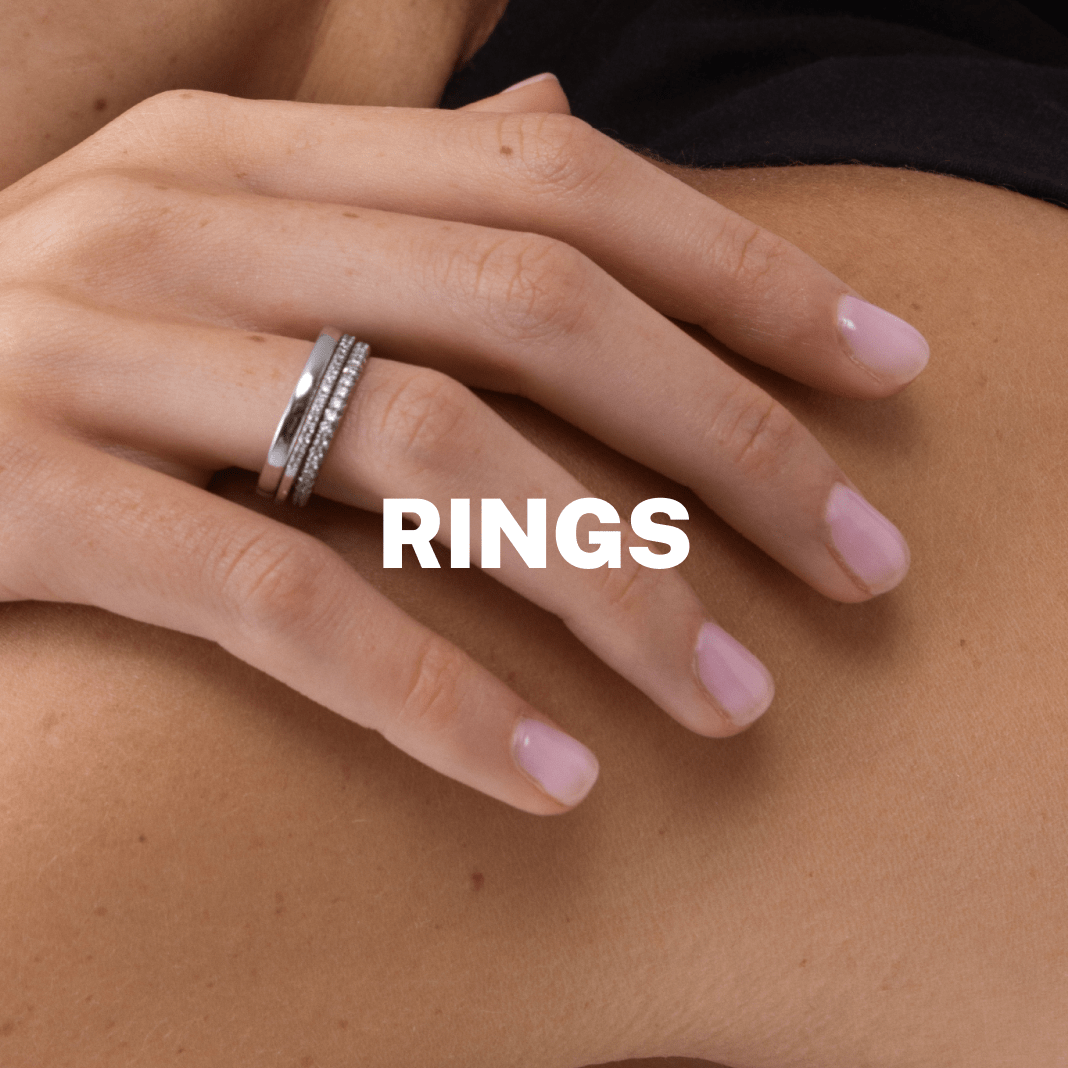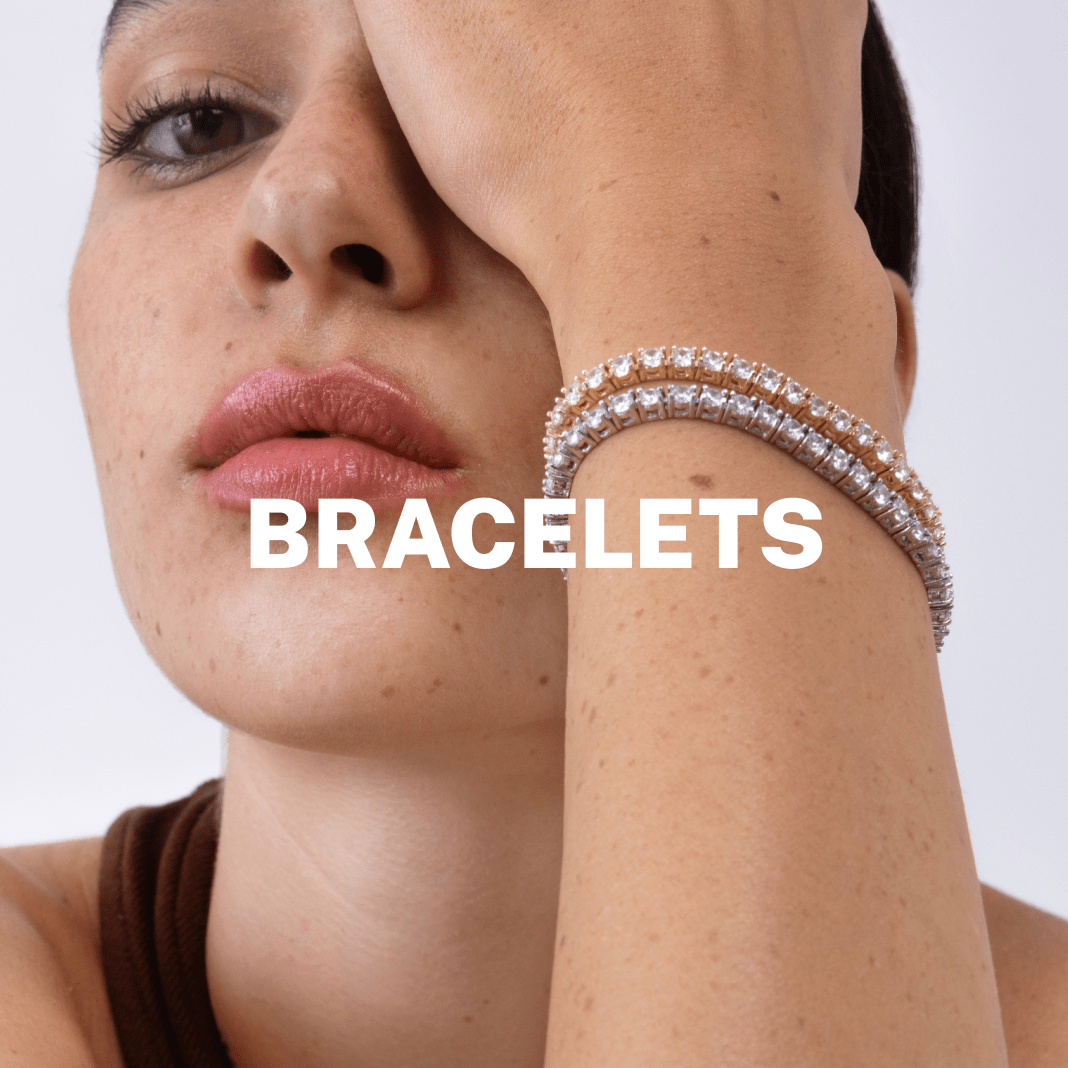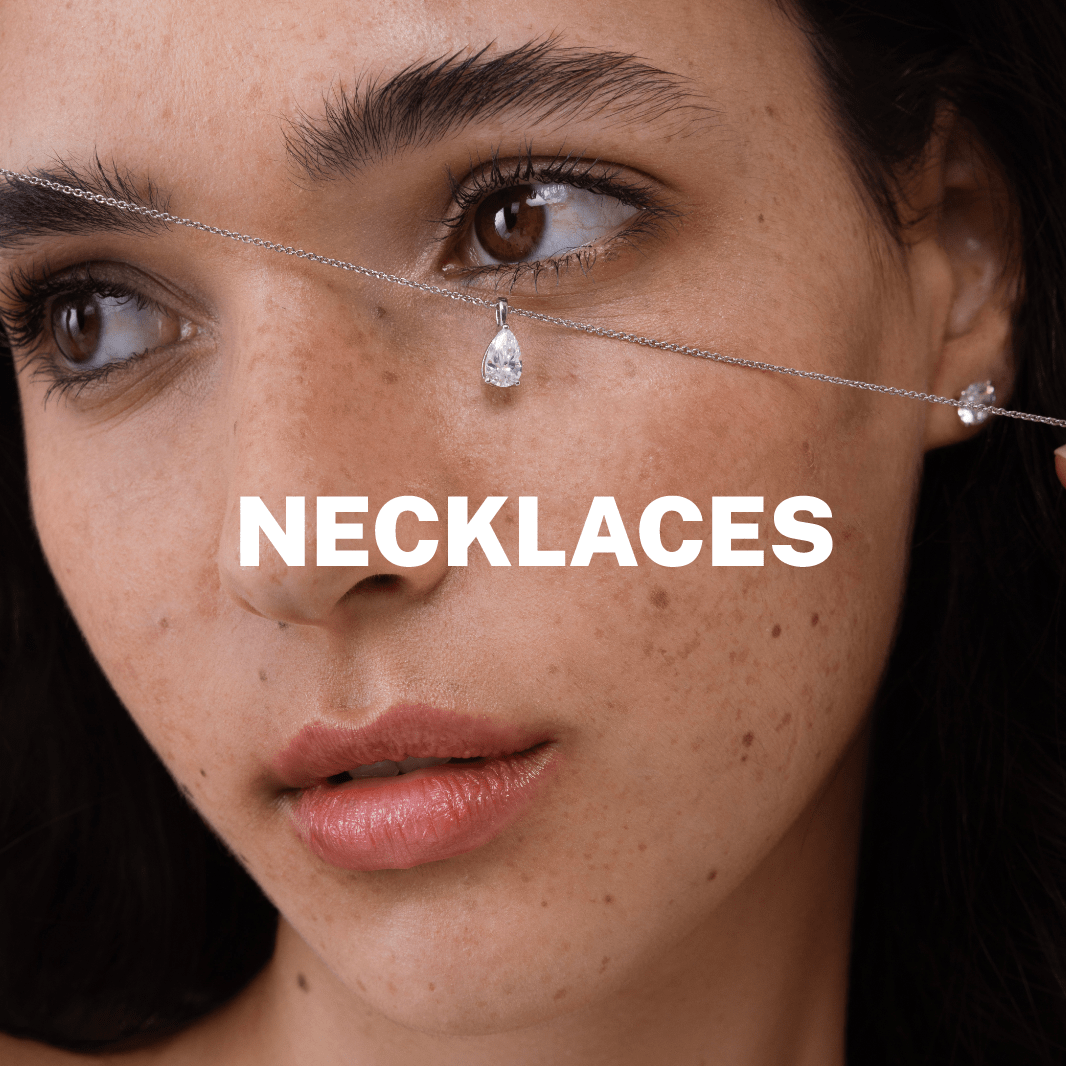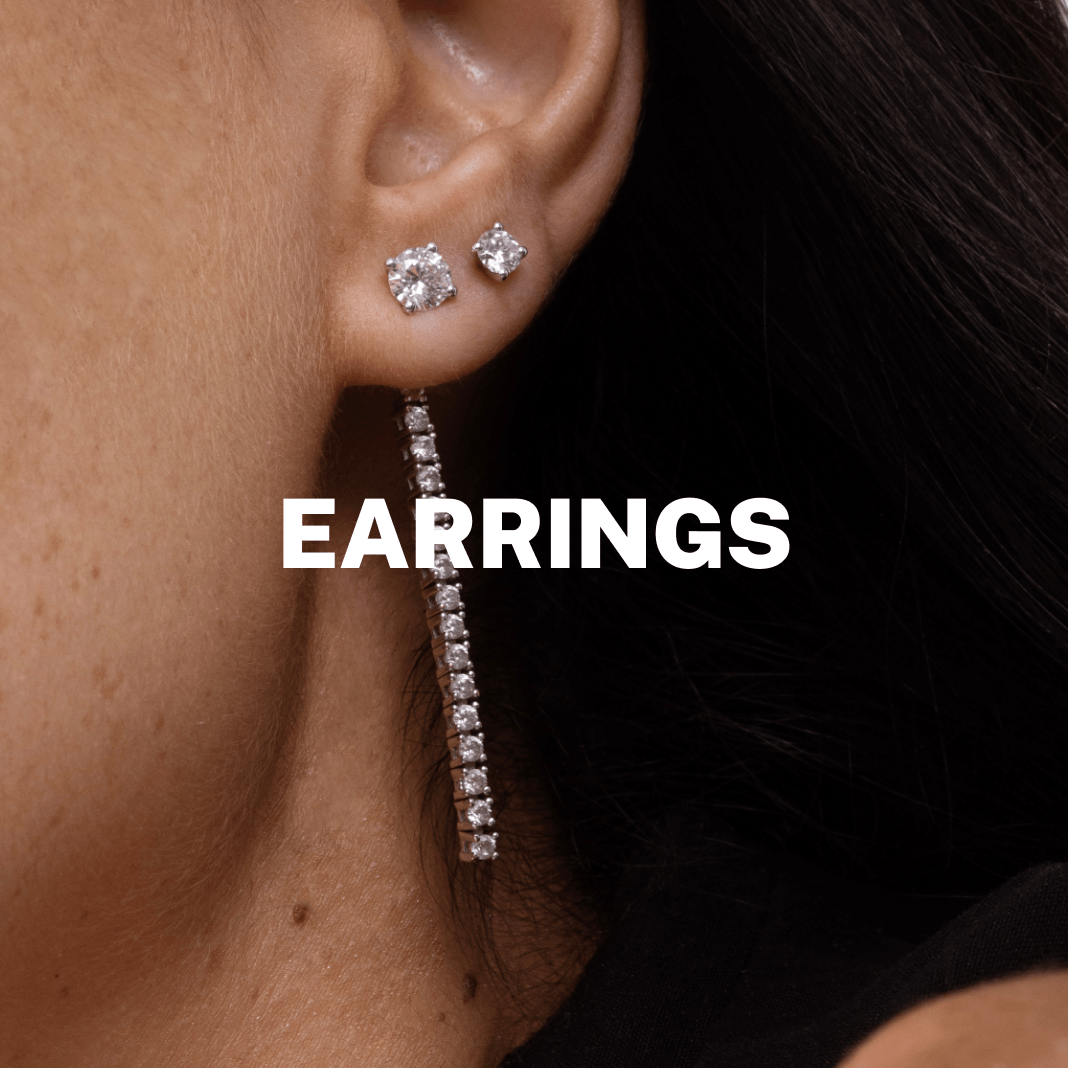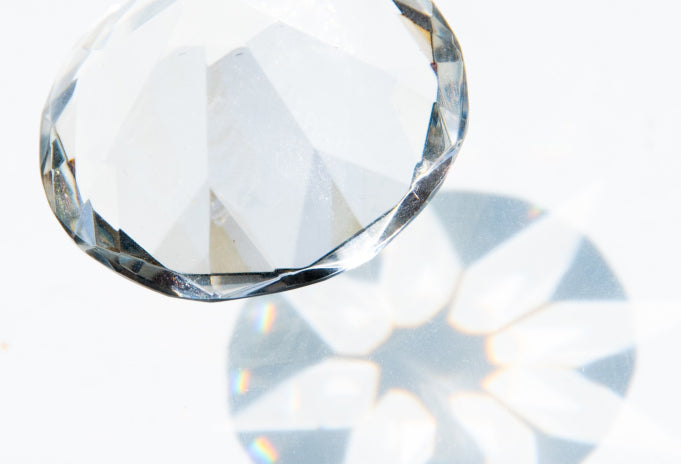
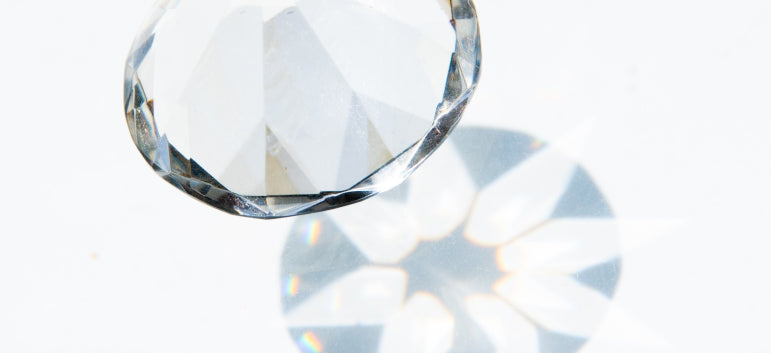
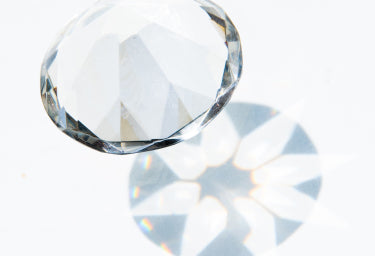
ניקיון יהלום
רמת ניקיון ביהלום לרוב מתייחסת לאיכות היהלום, אך מדובר באחד מתוך מספר פרמטרים באיכות הכוללת של היהלום. רמת ניקיון מדורגת מ-FL (חסר פגם), ל-I3 (מרובה פגמים).
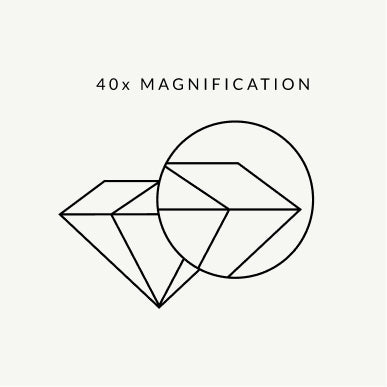
Flawless - VVS
קשה עד בלתי אפשרי לאתר פגמים, גם תחת הגדלה של X40.
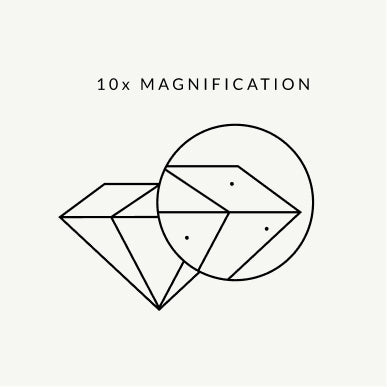
VS1 - VS2
שתי הרמות הנ"ל מתארות יהלום עם "מעט מאוד פגמים", והתכלילים בהם נראים רק תחת הגדלה של X10. זוהי רמת הניקיון הממוצעת ליהלומי מעבדה

SI1 - SI2
ביהלומים ברמות ניקיון אלו ישנם תכלילים מעט יותר בולטים לעין תחת הגדלה של X10. מדובר ביהלומים נקיים לעין העירומה ובאיכות מצוינת. זוהי רמת הניקיון הסטנדרטית שלנו ליהלומים טבעיים.

I1 - I2 - I3
נקראות גם רמות ניקיון P1, P2 ו-P3. פגמים ותכלילים נראים לעין גם ללא הגדלה. לא מומלצים אלא אם נבחרו במיוחד ע"י מומחה.
רמת ניקיון יהלומים = איכות?
ברק ונצנוץ יעידו יותר על החיתוך של היהלום מאשר על רמת הניקיון שלו. רק בדירוגים נמוכים רמת הניקיון משפיעה על הברק. על כל פנים, תמיד עדיף להימנע מפגמים נראים לעין ביהלום שלכם. רמת הניקיון הטובה ביותר היא FL (חסר פגמים), מה שאומר שאין תכלילים או פגמים באבן, גם לא תחת הגדלה של X40. ללא הגדלה, לעומת זאת, גם 3 או 4 רמות מטה (כמו VS1 או VS2) יראו אותו הדבר, ובמחיר נוח משמעותית. אז מה הבחירה שלכם?
הטוהר של היהלום הוא אחד המאפיינים המשפיעים דירוג הניקיון ועל בחירת היהלום. טבלת הניקיון המצורפת מטה מציגה את רמות הניקיון השונות לצד עצות פרקטיות ממומחים שינחו אתכם כיצד לבחור את הרמה המתאימה לכם. הטבלה מדורגת מרמת הניקיון הגבוהה ביותר, הנדירה ביותר ליהלומים, ועד לרמה הנמוכה ביותר, בה תג המחיר הנמוך – בהתאם.
טבלת ניקיון יהלום
|
דירוג GIA |
רמת ניקיון |
תיאור |
כלל האצבע* |
השפעה על המחיר |
|
FL |
חסר פגם |
ללא פגמים גם תחת הגדלה של 40X. |
מחיר גבוה מהנחוץ, אין הבדל משמעותי מרמות נמוכות יותר החל מה-VVS2 ומעלה. |
+ 40%-150% |
|
IF |
חסר פגמים פנימיים |
ללא פגמים פנימיים גם תחת הגדלה של X40. |
מחיר גבוה מהנחוץ, אין הבדל משמעותי מרמות נמוכות יותר החל מה-VVS2 ומעלה. |
+ 35%-120% |
|
VVS1 |
בעל מעט מאוד פגמים |
קשה מאוד לאתר פגמים גם תחת הגדלה של X40. |
לרוב יראו זהים ל-VS1 ו-VS2 ללא הגדלה. |
+ 30%-70% |
|
VVS2 |
בעל מעט מאוד פגמים |
קשה מאוד לאתר פגמים גם תחת הגדלה של X40. |
לרוב יראו זהים ל-VS1 ו-VS2 ללא הגדלה. |
+ 25%-50% |
|
VS1 |
בעל פגמים מועטים |
פגמים מועטים ושוליים גם תחת הגדלה של X40. |
כמעט תמיד יהיה יהלום נקי לעין, אך ביהלומים גדולים בחיתוך מדרגה מומלץ לבחון את האבן במציאות ולהתייעץ עם הצורף |
+ 15%-35% |
|
VS2 |
בעל פגמים מועטים |
פגמים מועטים ושוליים גם תחת הגדלה של X40. |
כמעט תמיד יהיה יהלום נקי לעין, אך ביהלומים גדולים בחיתוך מדרגה מומלץ לבחון את האבן במציאות ולהתייעץ עם הצורף |
+ 10%-20% |
|
SI1 |
בעל מעט פגמים |
פגמים מועטים ושוליים תחת הגדלה של X10. |
לרוב נקי לעין, תלוי בגודל, סוג ומיקום התכלילים בתוך האבן |
AVERAGE |
|
SI2 |
בעל מעט פגמים |
פגמים מועטים ושוליים תחת הגדלה של X10. |
לרוב נקי לעין, תלוי בגודל, סוג ומיקום התכלילים בתוך האבן |
- 15%-20% |
|
I1 (P1) |
בעל פגמים |
פגמים קטנים נראים לעין גם ללא הגדלה. |
בחלק מהמקרים כאשר התכליל מפוזרים ולבנים, יהלום שנבחר בקפידה יכול להוות תמורה טובה למחיר. הזהרו מיהלומים נקיים לעין אך עם מראה עכור או חלבי. |
- 40%-50% |
|
I2 (P2) |
בעל פגמים |
פגמים רבים נראים לעין גם ללא הגדלה. |
לא מומלץ |
- 60%-70% |
|
I3 (P3) |
בעל פגמים |
פגמים רבים נראים לעין גם ללא הגדלה. |
לא מומלץ |
- 70%-80% |
מי מבצע דירוג ליהלומים?
דירוג הניקיון הוא סובייקטיבי לגמולוג שמדרג את היהלום. ישנם כללים המבוססים על ניסיון של מהו טווח מקובל עבור כל אחד מדירוגי הניקיון, עם זאת, אין זה נדיר שמדרגים שונים, אפילו מאותה מעבדה, מדרגים אבן בצורה שונה. חלק מהמעבדות הגדולות יותר, כולל GIA, מעסיקות 2 בודקים לכל דירוג כדי להבטיח עקביות טובה יותר. כפי שתואר מעלה, רמות ניקיון גבוהות יותר יכולות לעתים קרובות להיות בעלות פגמים גלויים ואילו ציון נמוך יותר עשוי להיראות נקי לעין. טווח הסוגים הפוטנציאלי לתכלילים גדל ככל שאנו יורדים בסולם הניקיון, אך תמיד ניתן לפרשנות.
נוסף על כך, מוסדות גמולוגיים שונים עשויים לדרג מעט אחרת בהשוואה ל-GIA (הגוף הגדול והמוביל בעולם בדירוג יהלומים). לעתים קרובות מעבדות קטנות נוטות להיות פחות מחמירות בדירוג שלהן, בעוד שמאים וצורפים עצמאיים יהיו מחמירים יותר- כדי ללכת על הצד הבטוח או, במקרים מצערים אחרים, כדי לגרום ליהלומים שלא בבעלותם להוריד מערכם.
מאפייני ניקיון יהלום

עננים
עננים מתארים קבוצות של נקודות קטנטנות המפוזרות סמוך זו לזו, או תכלילים קטנטנים אחרים. לרוב עננים לא ניתנים להבחנה ע"י העין עירומה, ולכן לא נחשבים לבעיה שיש לדאוג ממנה. תכליל ענן שונה מיהלום בעל עננות (שהוא עכור או חלבי, ולא לגמרי שקוף).

עכירות
עכירות וחלביות לא מופיעות בטבלת התכלילים! תחת הגדלה, ישנם יהלומים שעשויים לקבל דירוג ניקיון גבוה- אך החומר של היהלום עצמו יכול להיות פחות שקוף, מה שנותן לפחות אור להשתקף ממנו בהשוואה ליהלום רגיל. במקרים נדירים, אך לא באופן קבוע, פלורסנטיות גבוהה עשויה גם היא לגרום לעכירות מסוימת ביהלום. בד"כ מדובר בצורה שבה היהלום נוצר באדמה.

פחמן
בעוד לעתים הן לא מתויגים בהתאם בתעודה הגמולוגית, תכלילים מסוימים דוגמת קריסטלים ונקודות קטנות נוצרים מנקודות פחמן, ולא מתכלילים לבנים. נקודות פחמן מסוג זה הן בד"כ יותר נראות לעין העירומה.

נוצות
נוצות הן תכליל ארוך וזוויתי, המופיע כמו חריצים ביהלום. מדובר בתכליל שלא מסכן את עמידות היהלום, אלא אם מדובר בנוצה גדולה חריגה בגודלה הקרובה לפני השטח של היהלום.
נוצות גדולות יכולות להיות בולטות יותר לעין, שכן הן מושכות יותר אור בזווית מסוימת. בנוצות על פני השטח אשר נראות לעין העירומה ניתן לטפל בטיפול משדרג ניקיון, כדי להפוך את היהלום למושך ואסתטי יותר.

נקודות
נקודות קטנטנות של קריסטל לבן או שחור בתוך היהלום, אשר בד"כ ניתן לראות רק תחת הגדלה של X40.

קווי גידול
קווים ודפוסים רנדומליים של נוצות וקריסטליים מקובצים יחד. מכיוון שמדובר בתכלילים מפוזרים, במקרים רבים אם לא יהיו בולטים לעין ותוכלו להבחין בהם רק אם מדובר במקבץ גדול ודחוס המכסה חלק מהיהלום.
כאשר אנו בוחרים יהלום עבור התכשיט שלכם, אנו נעזרים בעשרות שנות הניסיון שלנו בבחינת יהלומים אמיתיים- ולא רק בוחנים תעודות או סרטוני הגדלה באינטרנט. כאשר אתם בוחרים כל תכשיט מקולקציית היהלומים שלנו- אנו מבטיחים כי הוא יהיה נקי לעין.
איך קובעים כי יהלום נקי לעין
בכדי להבטיח את התמורה הטובה ביותר למחיר, תרצו לחפש את היהלום עם המחיר הנמוך ביותר שאינו מציג פגמים ותכלילים הבולטים לעין העירומה (ללא הגדלה). עם זאת, לבחון ניקיון יהלומים "על הנייר" בלבד לא יראה לכם את כל הסיפור.
אפשרי לקבל יהלום בדירוג VS2 שאינו נקי לעין, לצד יהלום בדירוג SI2 שכן. ההחלטה אם היהלום "נקי לעין", אם כן, יכולה להיות טריקית.
ישנם ארבעה מאפיינים מרכזיים שצריך לקחת בחשבון לפני שמחליטים אם יהלום הוא נקי לעין או לא:
- צורת היהלום וסוג החיתוך שלו
- סוג, מיקום וגודל התכלילים
- איזו תעודה גמולוגית הונפקה בעבור היהלום
יהלומים גדולים מול קטנים
מצד אחד, ככל שהיהלום קטן ומשקלו בקראט נמוך, יותר קשה לראות הבדלים בין רמות הניקיון השונות. מצד שני, ההבדל במחיר בין היהלומים הקטנים הללו הוא יחסית נמוך.
כאשר אנחנו מעלים את משקל הקראט של היהלום, כך סביר יותר שנוכל לראות יותר תכלילים בולטים לעין- וזאת כיוון שהניקיון של היהלום מדורג בהתאם לקראט שלו. אותו התכליל הקטן יחסית על יהלום השוקל חמישה קראט- יראה גדול משמעותית על יהלום השוקל קראט אחד. נוסף לכך, קל יותר לראות את התכלילים על הפאות של יהלומים גדולים יותר, שכן ישנו יותר שטח פנים המשקף את הפגמים הפנימיים. ביהלומים קטנים יותר, הפאות הקטנות יוכלו לחפות או להסתיר את הפגמים הפנימיים כאשר האור הנשבר ביהלום יוצר אפקט נצנוץ. הנושא יהיה רלוונטי במיוחד כאשר מחפשים יהלומים בדירוג VS1-SI2. מדירוג VVS2 ומעלה, מובטח כי תקבלו יהלום נקי לעין על כל פנים.
מחירם של יהלומים גדולים, עם זאת, עולה משמעותית ככל שעולים ברמת הניקיון. הדבר נכון עבור כל ארבעת ה-C's, ובהם צבע או חיתוך. ככל שהאבן נדירה ויקרה יותר, כך הערך הנוסף של כל אחד מהערכים גבוה יותר.
חיתוך בריליאנט מול חיתוך מדרגה
למרות שליהלומים שונים יכול להיות אותו דירוג על הנייר ואותו משקל בקראט, יכול להיות הבדל משמעותי בין הנראות שלהם לעין- רק בגלל הדרך בה הם חתוכים. למטרה זו, נחלק את צורות היהלומים לשתי קבוצות עיקריות: חיתוך בריליאנט וחיתוך מדרגה.
יהלומים בחיתוך בריליאנט:
עגול, פרינסס, רדיאנט, אובאלי, מרקיזה, לב, טיפה, טריליון וקושאן

יהלומים בחיתוך מדרגה:
אמרלד, בגט ואשר

ביהלומים בחיתוך מדרגה אין זה נדיר שברמת ניקיון VS1-VS2 יופיעו תכלילים הנראים לעין, בעיקר באבנים גדולות יותר בהן התכליל נמצא במרכז היהלום. יהלומים בחיתוך בריליאנט יכולים לטשטש תכלילים משמעותיים יותר ועדיין להיראות נקיים לעין.
שאלות נפוצות על ניקיון יהלומים
האם רמת הניקיון משפיעה על נצנוץ היהלום?
הנצנוץ מושפע ממספר משתנים, ביניהם דירוג החיתוך, ליטוש וסימטריה שהוא המשמעותי ביותר. בעוד המשתנים הנ"ל משפיעים בעיקר על הברק של היהלום, החומר הגולמי שלו – ולעתים גם פלורסנטיות גבוהה, יכולים לשחק תפקיד. לצד זאת, ברמת ניקיון נמוכה במיוחד סביר להניח שהנצנוץ לא יהיה אופטימלי.
מה המשמעות של רמת ניקיון גבוהה ביהלום?
רמת ניקיון גבוהה מתארת לרוב יהלום נקי לעין לכל הפחות. בדירוג הניקיון, רמת ניקיון גבוהה תנוע בין FL (חסר פגם) ל-VS1.
האם פגמים ביהלומים תמיד נראים לעין?
לרוב הפגמים הינם בגודל מיקרוסקופי ולא נראים לעין העירומה, בעיקר ברמות ניקיון גבוהות יותר. בשירי אודיז אנחנו בוחרים בקפידה יהלומים נקיים לעין בלבד, כדי להבטיח את האיכות הטובה ביותר.
האם שווה להשקיע ביהלומים ברמת ניקיון גבוהה?
בדרך כלל שווה להשקיע ביהלום שהוא לכל הפחות נקי לעין, למען נראות ואסתטיות. מעבר לכך, בעוד הערך והמחיר יאמירו- ההבדל בנראות יהפוך שולי. בעבור יהלומים בחיתוך מדרגה מומלץ לבחור ברמת ניקיון גבוהה יותר, כדי להבטיח שהיהלום יהיה נקי לעין.
איך לתעדף בין קראט, חיתוך, צבע וניקיון?
התיעדוף בין ארבעת המאפיינים הנ"ל תלוי פעמים רבות בהעדפה האישית שלכם, ובתקציב. כדי למקסם את איכות היהלום ככל הניתן, כוונו לצבע בטווח שבין D-H לתכשיטים מזהב לבן, או ל-D-J לתכשיטים מזהב צהוב, לצד רמת חיתוך מעולה. לאחר מכן, הקפידו לבחור ביהלום נקי לעין, אך ללא תג המחיר הגבוה של רמות הניקיון הגבוהות ביותר.
האם כדאי לי לבחור ברמת ניקיון גבוהה יותר אם התקציב שלי מאפשר זאת?
העדיפויות שלכם ינחו את הבחירה הסופית שלכם ברמת הניקיון. אם תתנו יותר משקל לקראט, מחיר או איכות- יהלום נקי לעין הוא בד"כ פתרון מספק לרוב האנשים. בטווח שבין FL ל-VVS2 כמעט ואין הבדל משמעותי בנראות, או תועלת משמעותית מהמחיר הגבוה יותר. באותה נשימה, חשוב לומר שיהלומי מעבדה מציעים רמות ניקיון גבוהות יותר, במחיר נמוך יחסית.
